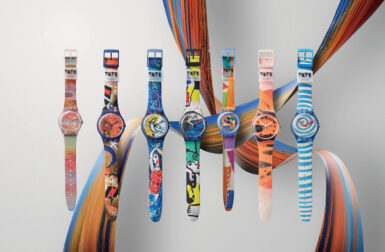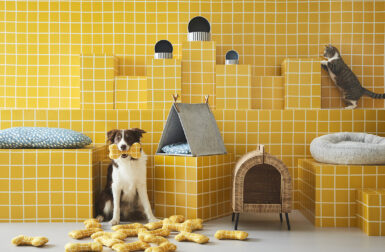I can still clearly recollect the first time I set foot in Tokyo. I had spent a week meandering through the spiritual capital of Japan, Kyoto, lulled into a state of serenity by the organic palette and terroir of the former capital – a quiet seduction of history and contemplative exploration. By chance, I found myself given opportunity to redirect my travels for an additional sleepless 16 hours in Tokyo before returning back to Los Angeles.
Two hours and 300+ miles later aboard the famed bullet train, I emerged into an explosion of colors, sounds, and an indescribable energy – a jolt to the senses, to say the least. From my very first shoulder-to-shoulder lunch inside Tokyo Station’s Standing Bar Sushi, to navigating through the confetti parade of one-of-kind fashions of Harajuku’s famed streets, to finally finding myself seated across from an Iron Chef while being toasted by a rowdy company of ruddy-cheeked (and very inebriated) Tokyo firefighters into the early morning, I can safely say the megalopolis is deserving of 16 days, rather than the mere 16 hours I was given.
WHERE TO STAY
Tokyo is the most populated metropolitan area in the world, a sprawl of 845 square miles, and home to nearly 37 million residents. Finding a place to stay isn’t difficult. Finding somewhere to your tastes and preferences requires a little research.

A capsule room inside the Tokyo Nihombashi Bay Hotel. Be sure to reserve a television or remember to bring a good book.
Tokyo is probably most famous for their atomic-scale accommodations known as capsule hotels. And while these one-person “rooms” do provide an interesting experience worthy of a single night’s stay to scratch the itch of novelty (we recommend the Tokyo Nihombashi Bay Hotel), there are numerous options for the aesthetically and comfort minded, like the hipster modernism of the CLASKA. A 20 room hotel categorized in 4 design themes – Modern, Tatami, D.I.Y., and Contemporary. The hotel’s lobby hosts a fashionable stage, set by the English design firm, Tomato, memorable for anyone with recollections of the 90s design scene and the electronic group Underworld.
On the upper end of Japanese hospitality is the Aman Tokyo, an internationalist boutique tower with rooms/suites tastefully appointed with tastefully simple furnishings, covered in warm woods, and edited into a calming departure from the busy streets underneath. Depending upon the room, guests can look out to the Imperial Palace Gardens or Mt. Fuji in the distance, making this a recommended hotel for lovers of a great view.
We’d say the most desirable reservation in all of Tokyo is a few nights inside the HOSHINOYA Tokyo, a 17-story hotel conceived to translate the ryokan – a traditional Japanese-style inn – into the context of a modern luxury hotel experience. Minimally furnished, each ryokan-style room is appointed in a contrast between new and old – shoji screens and tatami flooring set accompanied by a contemporary bathroom with a deep bathtub. As in every ryokan, there’s an ochanoma lounge (tea room) for guests to relax, drink tea, snack, and peruse a library before steeling themselves to explore the techno-labyrinth of Tokyo’s streets.

Guests with a curiosity for the culinary will discover great pleasure in the whimsical (and edible) designs of HOSHINOYA Tokyo’s Chef Noriyuki Hamada, the 2013 Bocuse d’Or world chef championship medalist responsible for the hotel’s “nouvelle ryokan cuisine”.
WHERE TO SHOP
Asking where to shop in Tokyo is like inquiring where to eat in Paris. Where to start?
We believe every retail excursion should begin with a snack, especially before walking around one of the busiest shopping destinations in the world. Higashiya Ginza fits this purpose with its ultimate attention to detail – a Japanese green tea and wagashi sweets shop with a stunningly executed interior by way of designer Shinichiro Ogata (the good folks over at Spoon & Tamago share a few more photos from within). You’re bound to overhear the words, “that’s too beautiful to eat” here…or utter them yourself.
Maybe the most unusual retail destination is Park-Ing, a cool kids apparel shop hidden inside a Ginza parking structure inside the two basement floors of the Sony building located at the Sukiyabashi intersection in Tokyo. If you want to come back home with rare denim and outerwear collections normally spied on the likes of Hypebeast and their ilk, Park-Ing should be added onto your itinerary.
Waltz is a time machine, a store filled with records, old boomboxes, cassette tapes, VHS, and a library of national/international magazines along its walls. They invite everyone in typical polite and charmingly imperfect fashion to, “please spend it time to relax”.
BUILDING Fundamental Furniture in the Minato ward of Tokyo builds furniture with pleasing clean lines done in unfinished woods, their aesthetic inspired by the mid-century and subtly embellished with a distinctly relaxing Japanese color palette. They also collect, curate, and sell a cool selection of vintage graphic prints for something easier to roll up and bring back home.
Think Muji, updated and upgraded to a higher fashionable standard – daily essentials, home accessories, furniture, art, and a little fashion thrown in – and you’ve got retailer, CIBONE. The interior was refreshed shortly ago by Tokyo design studio DAIKEI MILLS, guided by the theme, ‘New Antiques, New Classics’.
You’ll find two floors of chic fashion inside this 1,500-square-feet boutique – upstairs for gents, ground floor for ladies – once passing through the two foxes gracing the exterior banners of Maison Kitsuné Daikanyama. The wooden slats are meant to evoke a bamboo forest, alongside play a subtle nod to the currently retired and iconic Hotel Okura.
ART AND ARCHITECTURE

Nezu Museum. Photo by Rubber Soul/CC BY 2.1 JP
Omotesandō is known as one of the foremost ‘architectural showcase’ streets in the world, where Pritzger Prize winning architect designed buildings line its length, making this Shibuya neighborhood the first Google Map pin to drop upon arrival. Its combination of top-end retailer and architecture makes Omotesandō a uniquely satisfying place to window shop.

The Audi Forum by Creative Designers International (aka, The Iceberg). Photo by Roman Suzuki/CC BY 3.0
Some might be drawn to the Inception/Dr. Strange, architecture-turned-upside-down-inside-out of the Audi Forum Tokyo (aka the Iceberg) or the luminous translucent lantern turned flagship store for Dior, we recommend the Nezu Museum by Kengo Kuma, an example of the sublime and eternal. The museum’s signature feature is a long sheltered walkway made intimate by an overhanging eave, its length leading visitors accompanied by rocks, bamboo, and the promise of light at the end of the tunnel. A supremely Japanese architectural moment.

HH Style Casa in Harajyuku, Tokyo – designed by Tadao Ando. Photo: Wiiii/CC BY-SA 3.0
World famous architect Tadao Ando’s folded steel origami retail temple was unveiled with much fanfare, its sharp creased zinc-coated panels originally occupied by Japanese retailer HH Style and later, Armani Casa. Today it houses the Bank Gallery; unfortunately it’s been repainted a lighter hue, but still presents a worthy architectural destination if you’re within its vicinity.
High on our own list for a future visit to Tokyo: the Archi-Depot, housing the world’s largest collection of architectural models in the world! A permanent exhibition of architectural work by Japanese architects and design firms earns this museum accolades for lovers of design and miniatures (scope out what’s new in their collection over at their Instagram).
WHERE TO PLAY

A parade of adorably small food and beverage trucks are reason alone to visit the United Nations University Farmers’ Market in front of the university’s Aoyama headquarters. Photo by Gregory Han.
In contrast to the city’s reputation of manic modernity, one of my favorite memories of Tokyo was a more sedate experience that came by an unexpected detour through the United Nations University Farmers’ Market. Tokyo’s longest running open air market offers rows of stalls of farmers with enticing produce on display, alongside local artisans, craftsman, and prepared food vendors selling delicious snacks and beverages from adorably small vans and artfully arranged tables – everything packaged and prepared with an exemplary eye for detail.

Norah magazine is a print publication dedicated to the food and farmer culture of Japan. Photo by Gregory Han
Anyone seeking small gifts (especially for small bags of locally roasted coffee) would do themselves a favor by attending this outdoor market. Graphic designers, photographers, and foodies take note: nab an issue of the beautiful print publication, Norah, from the welcome table at the front of the market.

A dinosaur shooting out laser beams is just par for the course at the Robot Restaurant in Shinjuku. Photo by Nick Turner/CC BY 2.0
Friends in Tokyo have warned the Robot Restaurant in Shinjuku may have ties to some of the more nefariously-minded of their citizenry, but nobody in their right mind is going to pass up the opportunity to watch a blitzkrieg of dancing robots, lasers, and neon.
What did we miss? What are some of your favorite architectural landmarks, art galleries/museums, places to stay and shop in Tokyo?
This post is in partnership with TUMI. Our partners are hand-picked by the Design Milk team because they represent the best in design.






































